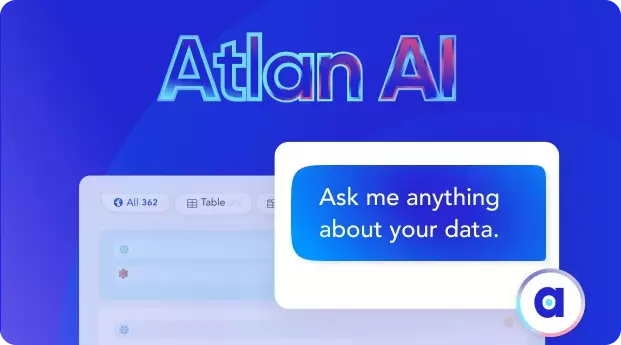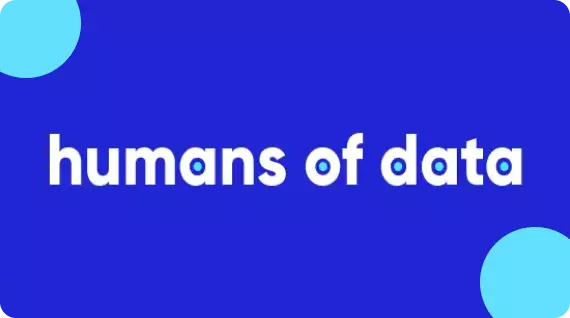Collective Intelligence: Concepts and Reasons to Choose It

Share this article
Ever felt stuck when trying to solve complex problems on your own? Collective intelligence is like having a brainstorming session with the world. It brings people together, each with their unique experiences and ideas, to tackle challenges as a team.
Imagine the relief of not shouldering the burden alone and the joy of discovering fresh, innovative solutions. With collective intelligence, you’re not just problem-solving; you’re building a community of support and creativity.
Modern data problems require modern solutions - Try Atlan, the data catalog of choice for forward-looking data teams! 👉 Book your demo today
In this article, we will explore the concepts, types, benefits, and and reasons to choose collective intelligence.
So, let’s dive in!
Table of contents #
- What is the theory of collective intelligence?
- 4 Types of collective intelligence
- What are the applications of collective intelligence? 5 Things to know!
- Why should you choose collective intelligence?
- What is the framework for collective intelligence?
- 10 Challenges of collective intelligence
- Summary
- Related reads
What is the theory of collective intelligence? #
The theory of collective intelligence refers to the idea that groups of individuals can collaborate and work together to achieve a level of intelligence and problem-solving capability that surpasses the abilities of any single member of the group. This concept is rooted in several key principles and has been explored in various fields, including psychology, sociology, business, and computer science. Here’s a detailed explanation:
1. Definition and conceptual framework #
Collective intelligence is the shared or group intelligence that emerges when people work together, often with the help of technology, to solve complex problems. It is an emergent property, meaning it arises from the synergies among individuals’ activities but is not predictable from the individual capabilities alone.
2. What are the principles of collective intelligence? #
- Diversity of expertise: A group with a wide range of skills and perspectives can often solve problems more effectively than a homogeneous group.
- Decentralization: Decision-making and problem-solving are distributed among group members, rather than being centralized in a single leader.
- Aggregation of information: Collective intelligence relies on the ability to aggregate and synthesize information from various sources, often facilitated by technology.
3. Mechanisms of functioning #
- Collaboration and communication: Effective communication and collaboration strategies are essential for collective intelligence.
- Coordination: Coordinating the efforts and contributions of group members is crucial for effective collective intelligence.
- Technology Facilitation: In many cases, technology (like AI, internet platforms) plays a key role in enabling and enhancing collective intelligence by facilitating information sharing and decision-making.
4. Future Prospects #
- AI and collective Intelligence: The integration of AI systems in collaborative human endeavors is a growing area of interest.
- Global challenges: Collective intelligence is increasingly seen as a vital tool in addressing global challenges like climate change, public health crises, and social inequalities.
5. Examples of collective intelligence #
- In organizations, collective intelligence is used for brainstorming, strategic planning, and problem-solving.
- Scientific collaborations, often spanning various countries and disciplines, are examples of collective intelligence in action.
- Projects like Wikipedia or open-source software development demonstrate collective intelligence in the digital realm.
In summary, the theory of collective intelligence posits that groups, through the right combination of diversity, integration, and technology, can be smarter and more effective than even the smartest individuals within them. This theory is increasingly relevant in a world where complex problems require collaborative solutions.
4 Types of collective intelligence #
Collective intelligence isn’t a one-size-fits-all concept; it manifests in various forms, each with its unique characteristics, mechanisms, and applications. Understanding these types can help us harness the collective’s full problem-solving and creative potential.
Below are some prominent types of collective intelligence:
- Human-based collective intelligence
- Computer-based collective intelligence
- Hybrid systems
- Natural collective intelligence
Let’s discuss the types of collective intelligence in detail.
1. Human-based collective intelligence #
Human-based collective intelligence refers to the gathering and synthesis of knowledge, expertise, and resources from multiple human participants to create a form of intelligence greater than any individual could produce alone.
It is often facilitated through face-to-face interactions, virtual platforms, or coordinated activities and focuses on leveraging the diverse skills and perspectives of its participants. Here is the key types of human based collective intelligence.
-
Crowdsourcing: Crowdsourcing leverages the wisdom and skills of a large group of people to solve problems, create content, or gather information. Examples include open-source software and public contests to generate innovative solutions.
-
Delphi method: In this technique, a panel of experts answers questions in multiple rounds. After each round, the experts see anonymized summaries of their peers’ forecasts and can then adjust their own answers, which may lead to a convergence on a collective decision.
-
Open innovation: Companies and organizations use open innovation to go beyond their walls and tap into external sources for ideas, innovations, and solutions, incorporating a wider range of human intelligence.
2. Computer-based collective intelligence #
Computer-based collective intelligence represents the convergence of computational power and large-scale data analysis to produce intelligence or problem-solving capabilities that are beyond the scope of individual agents—human or machine.
In this modern era, where data is often referred to as ‘the new oil,’ computer-based collective intelligence serves as the refinery, transforming raw data into actionable insights. Here’s a deeper look into this fascinating type of collective intelligence.
-
Artificial Intelligence (AI): Here, machine learning algorithms and other computational methods contribute to problem-solving, often processing massive sets of data faster and more accurately than humans.
-
Big data analytics: Analytical tools process enormous sets of data from various sources to find patterns, trends, and actionable insights, offering a form of intelligence that is the collective output of many data points.
-
Multi-agent Systems: These are complex systems featuring multiple intelligent agents—either human, machine, or a hybrid—interacting to solve problems beyond the capabilities of individual agents.
3. Hybrid systems #
Hybrid systems in the context of collective intelligence refer to the integrative frameworks that combine both human and computer-based intelligence to achieve superior problem-solving capabilities, creativity, and decision-making.
These systems leverage the complementary strengths of human intuition, emotional intelligence, and creativity with the speed, efficiency, and computational power of artificial intelligence (AI).
-
Human-in-the-loop systems: Combines human expertise and AI algorithms for tasks such as machine learning model training and refinement.
-
AI-augmented human networks: Uses AI tools to assist human decision-making in various settings, such as healthcare diagnostics and financial markets.
-
Multi-agent systems: Incorporates both human actors and AI agents in a collaborative environment for complex problem-solving, often in simulated or virtual settings.
4. Natural collective intelligence #
-
Simple rules, complex behaviors: In nature, collective intelligence often arises from individuals following a set of simple rules. For instance, a flock of birds can display complex aerobatic maneuvers through basic behaviors like maintain a fixed distance from your nearest neighbor.
-
Local interactions: The brilliance of natural collective intelligence often lies in the local interactions among individual members of a group. These interactions, though appearing random or insignificant, cumulatively result in complex and adaptive behaviors that benefit the entire group.
-
Feedback loops: Nature frequently employs feedback loops to sustain collective intelligence. For example, ants lay down pheromone trails that strengthen based on the number of ants following a path, guiding others more effectively toward a food source.
Why should you choose collective intelligence? #
Choosing collective intelligence (CI) as a problem-solving approach offers numerous benefits, especially in complex, dynamic environments where individual expertise and perspective might be limited. Here are some key reasons to opt for collective intelligence:
1. Diversity of perspectives #
- Broader insight: Collective intelligence brings together diverse perspectives, skills, and areas of expertise. This diversity can lead to more innovative and comprehensive solutions than any single individual could provide.
- Reduced biases: By incorporating varied viewpoints, collective intelligence can help counteract individual biases and blind spots, leading to more balanced and objective outcomes.
2. Enhanced problem-solving capacity #
- Complexity handling: Complex problems often require multidisciplinary approaches. Collective intelligence leverages the collective knowledge and skills of a group, making it better suited to tackle such complexities.
- Synergy: The collaborative effort in collective intelligence can produce a synergy where the total output is greater than the sum of individual contributions.
3. Improved decision making #
- Richer pool of ideas: A collective approach generates a wider range of ideas and solutions, providing more options for decision-making.
- Critical evaluation: Group settings enable critical evaluation and refinement of ideas, leading to more robust decisions.
4. Adaptability and learning #
- Dynamic adaptation: Groups can adapt more dynamically to changing circumstances than individuals. Collective intelligence fosters a continuous learning environment where strategies and solutions can evolve in response to new information.
- Knowledge sharing: Collective intelligence facilitates the sharing of knowledge and experiences among group members, enhancing the learning curve for the entire group.
5. Increased inclusivity and engagement #
- Stakeholder engagement: Involving diverse stakeholders in the decision-making process can increase buy-in and commitment to the chosen course of action.
- Democratic participation: Collective intelligence promotes a more democratic approach to problem-solving, where multiple voices are heard and considered.
6. Scalability and resource utilization #
- Leveraging collective resources: Collective intelligence can tap into a broader range of resources, both human and material, than individual efforts.
- Scalable solutions: Solutions developed through collective intelligence are often more scalable, as they are created with inputs from a variety of contexts and viewpoints.
7. Technology and innovation #
- Technological integration: Modern technologies like AI, big data, and online collaboration platforms can enhance collective intelligence, leading to more innovative solutions.
- Keeping pace with change: In a rapidly changing technological landscape, collective approaches are often better at keeping pace with innovation and emerging trends.
8. Addressing global challenges #
- Tackling global issues: Many of today’s challenges, like climate change or global health crises, are too complex for any single entity to solve. Collective intelligence allows for pooling global expertise and resources to address these issues.
In essence, collective intelligence is not just about accumulating more information; it’s about integrating diverse skills, experiences, and viewpoints to create more effective, inclusive, and adaptable solutions. As challenges become more complex and interconnected, the need for collective intelligence becomes increasingly apparent.
What are the applications of collective intelligence? 5 Things to know! #
Collective intelligence offers a wide range of applications across various sectors, from business and management to social systems and scientific research. By harnessing the collective wisdom, expertise, and capabilities of individuals, we can solve complex problems, improve decision-making, and unlock new possibilities. Here are some key areas where collective intelligence is actively being applied:
- Business and management
- Science and research
- Social systems and governance
- Healthcare
- Technology and data science
Here are the explanation for applications of collective intelligence.
1. Business and management #
In today’s hyper-connected world, the power of collective intelligence in business and management can’t be overstated. The pooling of diverse viewpoints, skills, and expertise offers invaluable insights that can significantly improve decision-making, innovation, and operational efficiency.
This article aims to delve into the key applications of collective intelligence in business and management, providing you with actionable strategies to implement within your organization.
-
Decision-making: Companies often use collective intelligence tools like crowdsourcing, focus groups, or Delphi methods to make more informed decisions. Employees, stakeholders, or even customers can contribute insights, which are then analyzed for the best outcomes.
-
Innovation: Many firms host open innovation platforms where people from various backgrounds can offer solutions for complex business challenges, creating a rich pool of ideas that can be vetted and implemented.
-
Market research: Companies can use crowdsourced data to predict market trends, understand customer behavior, or test product ideas before they hit the market.
2. Science and research #
The realm of science and research is continually evolving, and one of the driving forces behind this progress is the incorporation of collective intelligence.
Scientists, researchers, and academic institutions are increasingly looking towards collective methodologies to accelerate discovery, cross disciplinary boundaries, and make more informed decisions. Now, let’s explore the various ways in which collective intelligence plays a pivotal role in the field of science and research.
-
Collaborative research models: Research initiatives increasingly utilize collective intelligence through collaborative networks that cut across disciplines and geographies, speeding up the discovery process.
-
Citizen science: Laypeople contribute to scientific data collection and analysis in projects that range from monitoring local water quality to identifying new celestial objects, often facilitated through online platforms.
-
Forecasting: Expert crowds are often used to predict the outcomes of scientific research, such as the likelihood of a medical breakthrough or the impacts of climate change.
3. Social systems and governance #
Social systems and governance, a pivotal area where the concept of collective intelligence has immense potential to effect meaningful change. As we navigate an increasingly interconnected world characterized by rapid technological advancement and complex challenges, traditional top-down approaches to governance are becoming insufficient.
This section aims to explore how collective intelligence can be harnessed to enrich social systems, enhance participatory governance, and ultimately, create more equitable and resilient communities.
-
E-democracy: Online platforms allow for broader public participation in governance, such as e-petitions, referendums, or policy discussions.
-
Collective bargaining: Groups can use collective intelligence to negotiate better terms in various settings, from labor unions to consumer cooperatives.
-
Crisis response: In natural disasters or other emergencies, collective intelligence can help coordinate rescue efforts, manage resources, and disseminate timely information.
4. Healthcare #
Healthcare in collective intelligence refers to the collaborative approach within the healthcare sector that harnesses the knowledge, expertise, and insights of a diverse group of individuals and entities to enhance medical outcomes, optimize patient care, and innovate health solutions.
This amalgamation of shared intelligence goes beyond traditional medical teams, integrating input from patients, caregivers, researchers, technologists, and even the wider public.
-
Diagnosis and treatment: Medical professionals worldwide can collaborate to diagnose and treat rare diseases, combining their specialized knowledge for more accurate outcomes.
-
Public health initiatives: Collective intelligence can help in understanding the spread of diseases, planning vaccination drives, and in policy-making to improve public health.
5. Technology and data science #
In the realm of collective intelligence, technology and data science act as powerful catalysts, amplifying human capabilities to analyze and solve complex problems.
Cutting-edge algorithms and machine learning techniques process vast amounts of crowdsourced data, enabling more accurate predictions and informed decisions.
-
Data analysis: Crowdsourced data can be combined with machine learning algorithms for more accurate data models and predictions.
-
Human-AI collaboration: Collective intelligence is increasingly merging with artificial intelligence to create systems where human intuition and machine processing power complement each other.
What is the framework of collective intelligence? #
Navigating through the compelling universe of collective Intelligence , we encounter an intricate framework that binds discrete intelligences into a unified, robust entity.
This conceptual structure is not merely a conglomeration of cognitive resources but a meticulously crafted system that endeavors to orchestrate collective intellectual capacities towards the achievement of shared objectives. Collective intelligence framework contains the following points.
-
Defining the premise: a multitude of intellects
-
Componential substrates of collective intelligence
-
The spiral of collective problem solving
-
The ethical and inclusive framework
-
Evaluating and enhancing collective intelligence
To explore this, let’s delve into an elaborate exploration of the multifaceted framework that propels collective intelligence.
1. Defining the premise: a multitude of intellects #
Collective intelligence emanates from a premise where individual cognitive, emotional, and informational resources are harnessed and navigated towards a collective outcome. This does not merely imply aggregating information but involves synthesizing varied intelligences in a manner that propels collective understanding, problem-solving, and innovation.
2. Componential substrates of collective intelligence #
- Cognitive diversity
Encapsulating a multitude of perspectives, experiences, and expertise, cognitive diversity fosters a rich soil from which innovative solutions and ideas sprout, nourishing the collective intellect and enhancing problem-solving capabilities.
- Collaborative technologies
Technological platforms and tools that facilitate seamless collaboration, information sharing, and collective decision-making amongst participants, form a crucial element. This involves data sharing platforms, communication tools, and collaborative digital spaces that knit the collective together.
- Communication and interaction dynamics
The underpinning communication and interaction patterns amongst participants shape the efficacy and productivity of collective intelligence.
This involves ensuring transparent, inclusive, and effective communication channels that nurture collaborative interactions and facilitate the synergistic flow of information and ideas.
- Collective cognition and memory
The capability to jointly process, remember, and utilize information, ensuring that the collective is able to cogently learn, adapt, and navigate through challenges, leveraging shared cognition and memory.
3. The spiral of collective problem solving #
- Problem identification
Determining and agreeing upon the challenges or issues that the collective aims to navigate or resolve.
- Knowledge aggregation
Accumulating relevant data, insights, and expertise from diverse participants, ensuring a robust knowledge base.
- Ideation and exploration
Leveraging cognitive diversity to explore, ideate, and innovate, crafting potential solutions and strategies.
- Decision making
Utilizing collective insights to make decisions regarding the adoption, implementation, or revision of solutions and strategies.
- Implementation and evaluation
Actuating decided solutions and subsequently evaluating their effectiveness, learning, and adapting as a collective.
4. The ethical and inclusive framework #
- Ensuring equitable participation
Cultivating a space where voices are not only heard but valued, ensuring that decisions and innovations are sculpted from a balanced, inclusive standpoint.
- Ethical considerations
Navigating through the ethical implications and dimensions of collective decisions, ensuring that outcomes are aligned with ethical, social, and ecological considerations.
- Continuous adaptation
Ensuring the framework is fluid and adaptable, capable of navigating through evolving challenges, technologies, and knowledge landscapes.
5. Evaluating and enhancing collective intelligence #
- Assessment of outcomes
Measuring the impact and efficacy of collective decisions and innovations, ensuring they align with intended objectives and values.
- Feedback mechanisms
Incorporating feedback from varied stakeholders, ensuring continuous learning and enhancement of the collective intellect and methodologies.
- Sustainable evolution
Ensuring the sustainable evolution of collective intelligence, wherein it continually enhances its capabilities, adaptability, and alignment with emerging contexts and challenges.
In culmination, the framework of collective intelligence is a meticulously crafted, dynamic entity, evolving and adapting, yet grounded in principles of cognitive diversity, collaborative synergy, ethical navigation, and continuous enhancement.
The journey through collective intelligence is therefore not merely a collaborative endeavor but an odyssey that explores the profound capacities latent within our collective intellects.
10 Challenges of collective intelligence #
While collective intelligence offers a wealth of benefits, its application is not without challenges. As we strive to integrate the collective wisdom of diverse groups, it’s important to be aware of potential pitfalls that could compromise the efficacy and reliability of such systems.
Here are some of the key challenges associated with harnessing collective intelligence:
- Information overload
- Quality control
- Groupthink and herd mentality
- Cognitive biases
- Coordination challenges
- Ethical concerns
- Technological barriers
- Power dynamics and inequality
- Cultural and language barriers
- Managing complexity
Let us explore the challenges of collective intelligence in detail.
1. Information overload #
As more people contribute to a collective intelligence system, there’s an increased risk of information overload. Sifting through vast amounts of data to extract meaningful insights can be a daunting task, requiring sophisticated filtering and analytical tools.
2. Quality control #
Not all contributions to a collective intelligence system are equally valuable or accurate. Establishing reliable mechanisms for quality control is crucial to ensure that the collective output is dependable and actionable.
3. Groupthink and herd mentality #
The very idea of a collective suggests a degree of conformity, which can sometimes lead to groupthink or herd mentality. This compromises the diversity of perspectives, leading to less innovative or even flawed outcomes.
4. Cognitive biases #
Even in a collective setting, cognitive biases such as confirmation bias or availability bias can influence the group’s decision-making process, affecting the quality and objectivity of the final outcome.
5. Coordination challenges #
The more complex and distributed a collective intelligence system is, the more difficult it can be to coordinate effectively. Poor coordination can lead to duplicated efforts, inconsistencies, and delays in decision-making.
6. Ethical concerns #
Issues around data privacy, consent, and equitable participation can pose ethical challenges in collective intelligence initiatives. Ensuring transparent and ethical practices is essential for maintaining trust and integrity in these systems.
7. Technological barriers #
While technology can amplify collective intelligence, it can also be a barrier. Differences in access to technology, digital literacy, and infrastructure can limit the scope and effectiveness of collective intelligence efforts.
8. Power dynamics and inequality #
Without careful design, collective intelligence systems can unintentionally amplify existing power dynamics and inequalities, giving disproportionate influence to certain individuals or groups.
9. Cultural and language barriers #
Global collective intelligence efforts often encounter challenges related to cultural differences and language barriers, which can impede effective communication and collaboration.
10. Managing complexity #
As collective intelligence tackles increasingly complex problems, the systems themselves become more intricate, requiring advanced models and algorithms to manage the complexities efficiently.
In conclusion, while collective intelligence presents a promising paradigm for addressing various challenges, it also comes with its own set of hurdles. Understanding these challenges is the first step toward designing more effective and equitable collective intelligence systems.
Summary #
As we’ve explored the breadth and depth of collective intelligence, it’s clear that this paradigm holds tremendous potential for transforming how we approach problem-solving, decision-making, and innovation.
From its historical roots to its modern applications across sectors like business, healthcare, education, and governance, collective intelligence represents a significant shift towards more collaborative and intelligent systems.
Yet, even with these challenges, the benefits—ranging from enhanced problem-solving capabilities and resource optimization to accelerated innovation and global scalability—are too substantial to ignore.
In a world that is increasingly complex and interconnected, the need for collective intelligence is more pressing than ever. As we face monumental challenges like climate change, political polarization, and global health crises, the capability to harness the wisdom and skills of diverse groups—both human and machine—becomes not just beneficial but essential.
Collective intelligence: Related reads #
- What Is Data Masking: Techniques, Types, Examples, and Best Practices
- Data Discovery Tools: 9 Popular Tools You Should Consider in 2023
- What is Business Lineage: 10 Use Cases to Apply in 2023
- What is Data Governance? Its Importance, Principles & How to Get Started?
- Data Governance and Metadata Management: Understanding Their Synergy for Data-Driven Success
- Tribal Knowledge Problems: Inception, Examples & Solution!
Share this article









